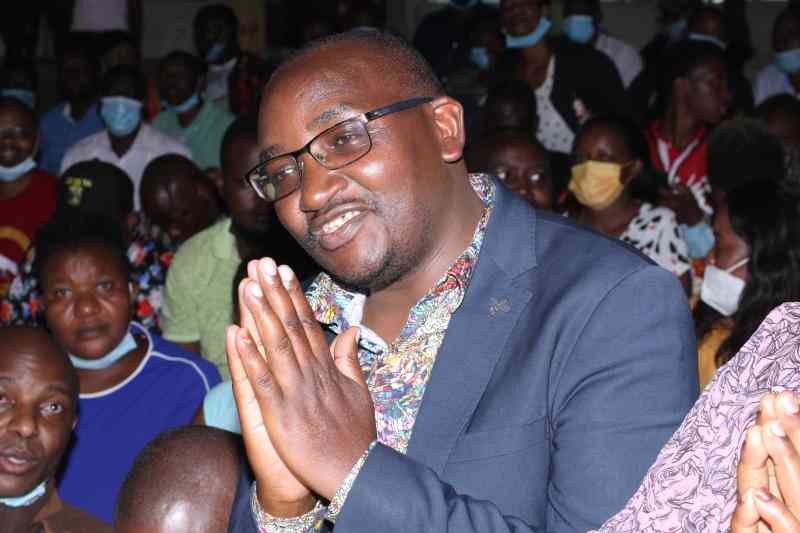New York prison system may be at a crossroads - Newsday
ALBANY — The last six unprecedented months in New York’s prison system, which included a fatal beating of a prisoner and the longest strike by prison guards in state history, could create an opportunity for systemic changes that could benefit prisoners, guards and all New Yorkers, according to prison reformers and academic researchers.
The recently approved budget addressed some prison issues, mainly the need to replenish the depleted ranks of correction officers after the strike and gave the strength of law to a new policy requiring guards to wear activated body cameras at all times.
But the debate over systemic change goes beyond that, pitting advocates who want to pursue innovative, progressive ideas against those who want a more regressive, punishment-driven approach.
Progressive exponents see an opportunity to follow the research and experience in northern Europe that they say have made prisons safer for inmates and guards, while focusing on breaking cycles of recidivism once prisoners are released. U.S. prisons dehumanize prisoners, they say, which makes them harder to control.
For example, they note European prisons offer more education opportunities, job training and counseling for inmates, make efforts to build mutual respect between guards and prisoners, and have dormitory-like facilities with private rooms and more common areas aimed at providing a less stressful setting than traditional cells.
"This is potentially a watershed moment for New York State prisons," said Michael Mushlin, professor emeritus of the Pace University Law School who has studied New York’s prison system.
He said the fatal beating in December of handcuffed- prisoner Robert Brooks by several guards that was caught on video has led to this crossroads. "It shows there is a deep cultural problem in the New York State prison system and we really have to use this momentum to come to grips with it," Mushlin said in an interview.
Soon after Brooks died Dec. 10, six correction officers were charged with murder. The death prompted Hochul and the legislature to require body cameras to be worn and activated and increased the number of surveillance cameras in prisons.
However, much of the political rancor over the last four months has been over the Humane Alternatives to Long-Term Solitary Confinement Act approved by the Democratic-led legislature as a more effective and human way to treat prisoners. The 2021 law limits use of solitary confinement as punishment. Before the HALT Act, prisoners were confined up to 23 hours a day over days, months, even years.
Repealing the HALT Act was a key demand of striking prison guards because they said the law weakened an effective punishment that limited assaults on correction officers. Opposition was led by upstate Republican legislators, who represent most of the districts in which prisons are major employers and argue for the widespread use of solitary confinement as a punishment.
"The Legislature has a responsibility to correct this egregious mistake, repeal HALT, return correction officers to their positions, get criminals off the streets, and keep the public safe," said Assemb. Paul Bologna (R-Clarence) in a GOP press conference earlier this month.
The strike was one of Hochul's biggest crises in office.
On Feb. 17, 90% of the state’s 13,500 correction officers went on a wildcat strike, ignoring even their own union. The strike would last for 22 days, during which seven more prisoners died.
The guards said a spike in assaults by prisoners and mandatory overtime that created some 24-hour shifts, in addition to the HALT Act, made their jobs too dangerous.
In the end, Hochul fired 2,000 guards who still refused to return to work after violating a state law against strikes by most state workers to protect public safety.
"Today, we can finally say this work stoppage is over and move forward toward making our prisons safer for all, supporting our correctional staff, and recruiting the correction officers of the future," Hochul told reporters.
The state budget deal now allows the state to hire correction officers as young as 18 years old, from the current minimum of 21, to boost the ranks as well as hire residents outside New York state. Hochul also gained authorization from the State Legislature to close as many as three of the state’s 42 prisons after closing two last year.
The closings follow a continued decline in the prison population and would help deal with the staff shortage, which continues to require thousands of National Guard troops at a cost of $100 million per month to secure prisons.
Several prison reform bills are also active in the Legislature.
"New York is long overdue in passing prison safety reforms," said Sen. Julia Salazar, a Brooklyn Democrat and chairwoman of the Senate’s Crime Victims, Crime and Corrections Committee. "New York’s prisons need greater transparency, oversight and accountability," she said in a written statement to Newsday.
The elements of one of her bills, cosponsored with Assembly Committee on Correction Chairman David Weprin of Holliswood Queens, which was adopted in the budget. It restores greater oversight power to the independent Commission on Correction, which the sponsors say has been eroded by the state since 2021.
Another provision adopted in the budget requires prison officials to turn over more prison records about the treatment of prisoners, including grievance and discipline reports, to the independent Commission on Correction. The voluntary commission would be required to maintain a website that allows prisoners to submit complaints.
The bill would also authorize the commission to hold "private interviews" of prison employees and prisoners who agree to the interviews.
The budget also provides for more programs that could lead to good-behavior credits for early release which has been supported by progressive Democrats in urban districts.
"The Democrats’ position is to let as many people out of prison as you can," said Senate Republican Leader Rob Ortt of North Tonawanda. "This is part of a longer goal to reduce the prison population," Ortt told reporters as the budget was being passed last week.
Laura Roan, vice president of the Osborne Association which advocates to help prisoners, said some solutions are already in law and policy, but underused. For example, she said in an interview that just 1% of eligible prisoners get temporary leaves to work jobs or to look for jobs shortly before they are released.
John M. Eason, a professor at Brown University who studies prisons and race issues within them, said he fears the political climate might not be right for significant progressive, rather than regressive change, "even in progressive states."
"The mood of the country is, ‘It's somebody’s fault,’" Eason said. "We will continue to punish people who don’t have any power."
But that’s a counterproductive way to go, said Christopher Dennison, a professor in the sociology and criminology department at the University at Buffalo.
"We have a very punitive viewpoint," he said of American penal systems. "We have harsh conditions that create stress and anger and that makes it hard to work in that system. The whole system is set up to create stress."
The U.S. incarcerates the most people by far in the world and has among its worst recidivism rates, he said. Other countries, such as Norway, fair much better in preparing prisoners to succeed once they get out and providing a much safer, less stressful work environment for corrections officers, he said.
"They say punishment can stop once we take away your freedom," Dennison said in an interview. He said Norway prisons are more like dormitories rather than blocks of cells. Days are spent in schooling, preparing for jobs and dealing with family stresses.
"The research shows what is working," he said. "This is an opportunity."
Programs to change the current model have been introduced in several states to varying degrees over the last 10 years, including in conservative strongholds such as North Dakota, said Ram Subramanian, managing director of the Brennan Center’s Justice Program at New York University Law School.
"It’s pretty widespread," Subramanian said in an interview. "There is an awareness of persistently bad outcomes of people returning from prisons, so there seems to be a consensus that things need to be improved."
"The interesting development over the last decade has is people are making the connection between the need to improve conditions of confinement, but also to improve the work conditions of correctional staff," he said.
For example:
The goal is "normalization," to benefit guards, prisoners and the communities to which they return, Subramanian said. "It’s not impossible in America, if the political will and resources are there to do it."

Michael Gormley has worked for Newsday since 2013, covering state government, politics and issues. He has covered Albany since 2001.












